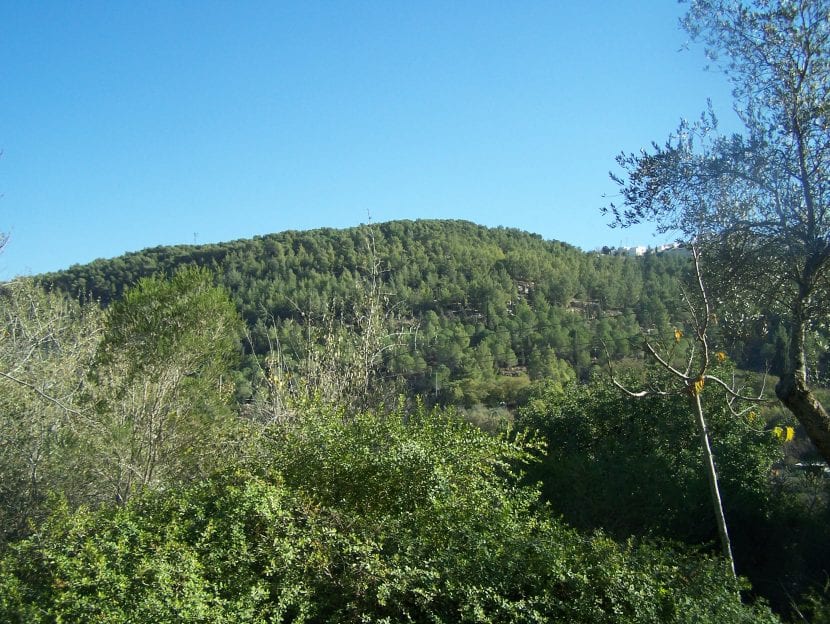
Image - Wikimedia / מתניה
The Mediterranean forest is a unique landscape, in which animal and plant species coexist that have managed to adapt to an environment in which drought and fires are the most serious problems that arise year after year.
Walking in it, feeling the song of the birds and the wind moving the leaves, is an experience that is not forgotten. Discover its origin, evolution, as well as the plants that give it color.
What is it?
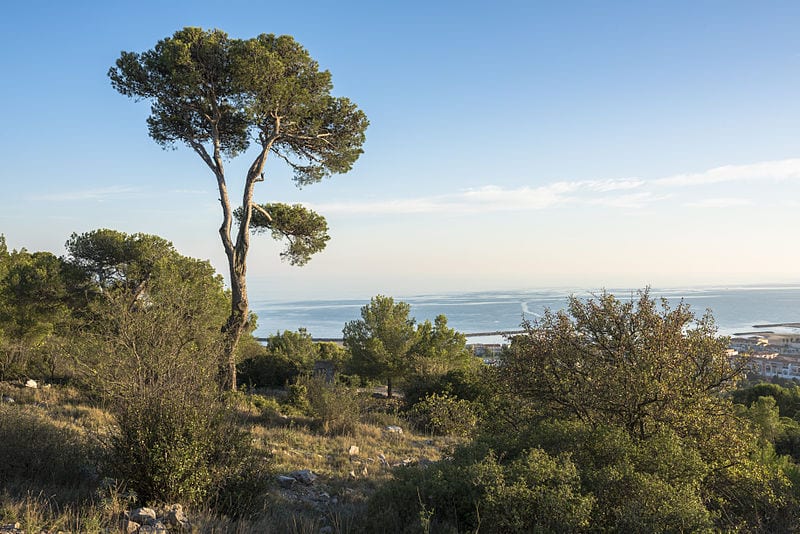
Image - Wikimedia / Christian Ferrer
Durisilva, as it is also called, is a forest and scrub biome found in regions of the world that have a Mediterranean climate, which are the basin of the sea that gives it its name, the Californian chaparral, the Chilean scrub, the South African fynbos and the malee to the south-west and south of Australia. In all cases, it is located between 30º and 40ºC of altitude, being 44º in the Mediterranean.
This climate is characterized by dry and very hot summers (maximum temperatures between 30 and 45ºC and minimum temperatures between 20 and 25ºC in mid-season), warm autumns, mild winters with sporadic frosts of up to -7ºC, and springs pleasant with 15-25ºC and rain.
What is the origin of the Mediterranean forest?
The origin of the Mediterranean region, and therefore, of its forest, It is located on the margins of the Sea of Thetis, an ancient ocean that separated what we know today as Africa and Europe but which experts call ancient Laurasia and ancient Gondwana. East underwent many modifications since the Middle Cretaceous (about 100 million years ago) until the end of the Miocene (7 million years).
Between 65 and 38 million years ago, the environment was warm and humid, so the forest could expand; however, at the end of the Oligocene (between 35 and 23 million years ago) temperatures dropped and rainfall decreased. From then on, little by little the conditions that give it life were installed today.
What are their characteristics?
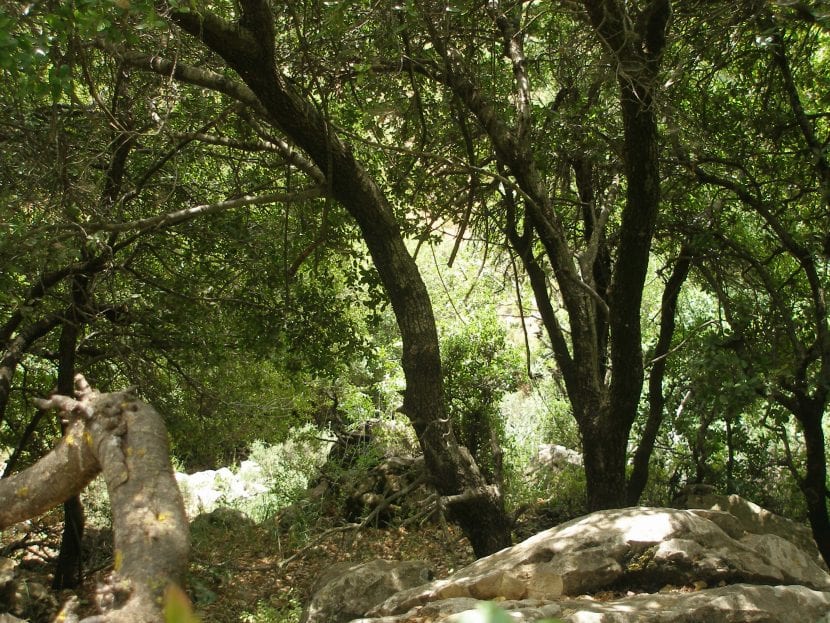
How the Mediterranean soil?
The mediterranean forest grows on land of different shades of red, containing a high percentage of clay and sand. The first layer, in general, is very poor in organic matter, since the high temperatures and the lack of rain make it have a tendency to erode; the second layer is composed of clays and ions, which make it very compact; and the last layer is formed by the mother rock, which is the one that, when decomposing when it comes into contact with water, releases the necessary nutrients for plants, such as iron or calcium.
Thus, we distinguish three types of Mediterranean land:
- Brown or reddish soil: they are those that contain a higher percentage of iron.
- Terra rossa: they are the oldest, and those that barely have a superficial layer that protects the rest.
- Southern brown earth: it is the one in Mediterranean forests of silicic origin. It is very vulnerable to erosion, so there is little variety of plants, which are mostly scrub shrubs.
What is the typical vegetation of the durisilva?
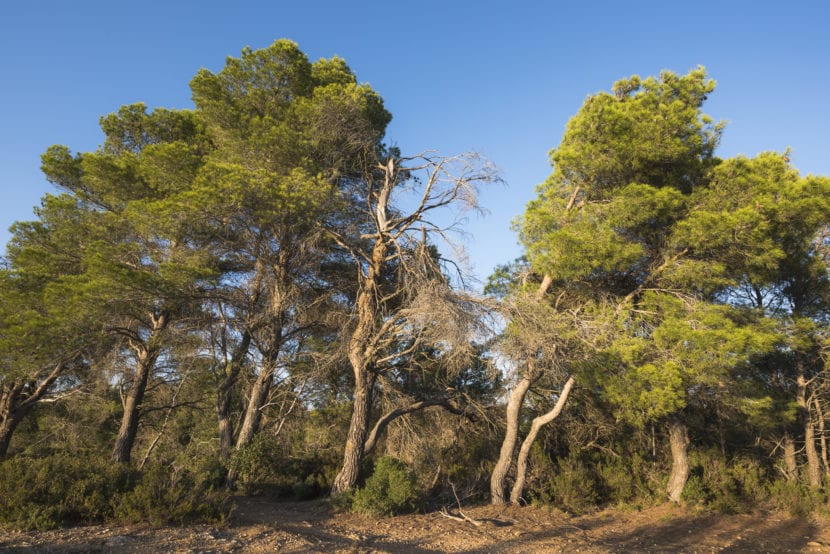
propagating through a pine forest (Pinus halepensis).
The plants that inhabit it they are called sclerophyllous and xerophilous, since they have to withstand the summer aridity which can easily last three months, sometimes more. Likewise, they are usually evergreen; that is to say, they gradually drop the leaves throughout the year while replacing them with new ones.
For this reason, what we can find most are:
- propagating through a pine forest (Pinus halepensis). (Aleppo pine): it is a conifer that reaches 25 meters in height, with a more or less straight trunk (although it can twist) and thin about 35-40cm in diameter.
- Pinea pine (stone pine): it is a conifer that can grow between 12 and 50 meters in height. It is usually found living with the Aleppo pine and, in places where it rains regularly, with holm oaks.
- Quercus ilex (Holm oak): it is an evergreen tree that reaches between 16 and 25 meters in height, which produces edible fruits in late summer / autumn.
- Quercus faginea (gall): it is a tree that reaches 20 meters in height, which blooms in spring (April and May in the northern hemisphere). It resists drought, but we will see it more in the more humid areas of the Mediterranean forest.
- Arbutus unedo (arbutus): it is an evergreen shrub 4 to 7 meters high that produces red edible fruits towards autumn.
- Juniperus sabina (sabina): it is a conifer that rarely exceeds one meter in height in the wild, and that can grow at ground level if conditions demand it (for example, if it has germinated in rocky terrain where the wind blows regularly).
- cistus (rockrose): they are evergreen shrubs up to 2-3 meters high, very resistant to fire. In fact, the seeds germinate better if the fruit that protected them has survived a fire.
- Rosmarinus officinalis (romero): it is an evergreen shrub up to 2 meters high with greenish leaves and small lilac flowers.
- Smilax rough (sarsaparilla): it is a climbing shrub of up to 2 meters, of which the roots can be used for being medicinal (they are used for cases of rheumatism and skin diseases).
- Pistacea lentiscus (mastic): it is an evergreen shrub that grows between 2 and 5 meters in height, which gives off a strong smell of resin.
There are also mixed forests, in which trees such as Ulmus (elms) and Populus (poplars) grow near waterways, such as rivers or lakes.
What role do fires play?
The truth is that today it is talking about fires and putting ourselves on alert, since every year there are many that are caused by irresponsible people. But We cannot forget that the unprovoked, that is, the natural ones, have been produced since the world is world. And the plants have had to adapt. Moreover, if it weren't for them, for example the eucalyptus forests of Australia would not be what they are today.
The same thing happens in the Mediterranean. Many plants are favored after a forest fire. We have talked to you about rockrose, whose seeds germinate more easily after being exposed to high temperatures, but it is not the only one. Surviving pines may grow stronger, or rosemary.
Fire - I insist, as long as it is natural - helps the forest rejuvenate, strengthen, and gain ground.
Climate change and human action in the Mediterranean forest
There have always been climatic changes, and the forest in question has seen how it has been transformed throughout its evolution. But above all in the last 5000 years, mainly due to deforestation and the use of fire, Mediterranean forests, although they increase their surface (they occupy about 88 million hectares), they are increasingly threatened by human development and increasingly long periods of drought.
Currently, there are more than 300 species of Mediterranean plants and animals in danger of extinction: Only in Spain, there is 26% of the total, followed by Italy (24%), Greece (21%), Turkey (17%) and Morocco (15%).
What can we do to preserve it?
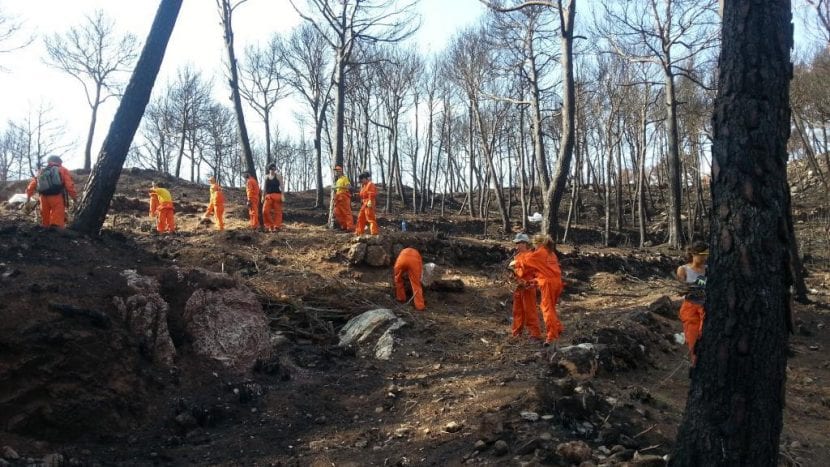
Volunteers collaborating in reforestation tasks, after the fire that occurred in the summer of 2014 in the Sierra de Tramuntana (Mallorca).
Image - Ultimahora.es
We, as individuals, we can take the following measures:
- Do not start fires (obviously, but it is important to remember that plants are the lungs of the Earth, and that thanks to them we can live).
- Help in reforestation.
- Do not make bonfires during the months recommended by the regional government (for example, in the Balearic Islands it is prohibited from March to September / October).
- If you are a smoker, take an ashtray and put out your cigarettes there.
- Do not leave plastic or any type of garbage.
At group / association / government level:
- Implement a forestry strategy that adapts to the conditions of the regional forest.
- Fight fires, creating awareness among citizens in educational centers, advertising, etc.
- Study and plant native plant species that resist drought.
- Strengthen forest value chains.
And with this I end. I hope everything you have learned about the Mediterranean forest has served you 🙂.